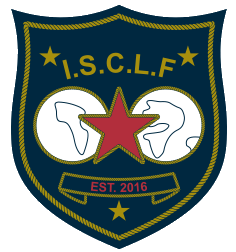GARDNER PLAN of 1910,
with Specifications and Letter dated 1917
Jim Peters of Cleveland, Ohio, has kindly provided the following historical material: Star Construction Plan dated November, 1910, Specifications for the Star and a cover letter from the office of William Gardner dated March 19th, 1917.
Jim has the following comment about the plans:
“In the early 1940’s my father and uncle, Ray and Ed Peters bought Star #170. After the war they built the "Starmaid", #2722. The Starmaid was constructed of philippine mahogany because the cost and/or availability of other woods was prohibitive. Judging from the Log and from dates on pictures, they started the Starmaid in 1948 and launched her in 1950. Pure conjecture on my part is that someone gave them the Gardner plans and they weren't complete enough or modern enough to build a new boat from, so they ordered the 1946 plans from the Class. We had a mantel full of trophies that they won from about 1950 thru 1957.”
Jim still has the Starmaid, #2722, which he inherited from his uncle Ed.
As far as can be determined, this set of plans is the only set of original plans still in existence. The set consists of the Construction Plan, reproduced here, the Lines Plan for hull and keel, a full-scale Stem Plan, and a full-scale chainplate drawing.
WILLIAM GARDNER & Co.,
NAVAL ARCHITECTS, ENGINEERS,
YACHT AND VESSEL BROKERS
No. 1 BROADWAY, New York. March 19th, 1917.
Dr. E. K. Huntington,
11636 Detroit Avenue,
Cleveland, Ohio.
Dear Sir:
I am sending you by to-day's mail, blue-prints of the standard "STAR" boat, which is the same as Mr. George A. Corry's, and am also enclosing copy of specifications.
I was talking with a gentleman from Cleveland on Friday last, who told me that you probably wanted to build this boat yourself. You are probably aware that the Rocky River Dry Dock Co. are building a number of these boats and it would be cheaper for you to have it built there. However, I can appreciate the satisfaction you would probably get from building the boat yourself, if you enjoy work of that kind.
As regards the fittings - It would be foolish for you to make patterns of same, as the patterns alone would cost you three times as much as the fittings. If you wish, we can furnish you the fittings, which are the ones used on all the boats here. The prices two months ago were as follows - -
Bronze blocks and sheaves, $16.50
Iron keel, 50.00
Deck and spar fittings, 29.64
Sails, 70.00
Rigging, 25.00
Track, slides, etc., 13.50
--------
$204.64
If you desire them, will get these prices verified, and they will probably not differ very much from the above figures.
As regards the fin - - You could probably do a great deal better by getting this from the Rocky River D. D. Co., as they, I understand have made a pattern for it, which is a very expensive thing and very difficult to make. When the freight is taken into consideration, they could probably furnish you the fin at a much lower price than the above. If, however, you wanted an absolutely correct fin and didn't mind the slight increased cost, it would be better to get it here, as the fin pattern was checked up very carefully by myself, so there in no question about its accuracy.
As the Rocky River D. D. Co. are trying to build the boats cheaper than they could possibly be built and have everything up to the standard of the boats here, you would probably get better satisfaction by getting the standard fittings.
These boats have been a wonderful success, which is undoubtedly due to the great care which has been given by ourselves in seeing that the design, etc. are carried out and the boats properly equipped and rigged, and also the great care and interest shown by Mr. George C. Corry and others in maintaining them at a very high standard.
I regret that some of the members of your Club did not come on to Port Washington last fall when these boats were racing, so they could see how they were rigged, the condition of the sails, and the way they were kept up.
I do not think the Rocky River D. D. Co. will have the track and slide on the boom and a number of other fittings, on account of saving expense. However, we consider those things very essential for the proper maintaining of the sails in good condition. You can, however, leave them off if you desire, but we would not advise it.
Any further information we can give you will be very glad to do.
I am sending these plans subject to our usual conditions, that they are for your personal use only and are not to be used for building any other boats. Our standard price for the use of the plans is $15.00, which please remit at your convenience.
Yours very truly,
Wm. Gardner & Co.
SPECIFICATIONS
--- FOR ---
"S T A R" C L A S S
DIMENSIONS:- Length over all, 22' 7"
Length water line, 15' 3"
Beam, 5' 8"
Draft, 3' 4"
KEEL PLANK:- Keel plank is to be of mahogany, 7/8" thick. Bottom planking to be of mahogany, 3/4" thick. Sternboard of mahogany, 7/8" thick. The topsides to be cedar, 3/4" thick, in two planks, with ship-lap and edges riveted with copper rivets.
STEM:- To be of oak, sided 3", moulded as shown.
FRAMES:- Frames to be of oak and hackmatack, 13-1/2" center to center. In wake of fin to be sided 1-1/2" moulded 1-1/2". In ends to be sided 1-1/4", moulded 1-1/2". Frames on sides to be knees, moulded 1-1/4", sided 7/8".
DECK BEAMS;- Large beams at mast and each end of cockpit, sided 1-1/4", moulded 1-1/2"; connected to frame by knees. Other deck beams to be sided 7/8", moulded 1-1/4". Short beams to be sided 3/4", moulded 1-1/4". Beams to be halved into frames.
KEELSON:- Keelson to be of yellow pine; to be 6" amidships, tapered at ends, and to be sided 7/8".
DECK:- To be of white pine or other approved wood, 7/16" thick, thoroughly painted and covered with 8 oz. canvas. Canvas to be carried down over sides of top strake and covered with flat weather strip, l-l/2" x 5/8" yellow pine, rounded on edges. Deck to be given 3 coats of paint.
BULKHEADS:- Boat to be fitted with two water-tight bulkheads of approved construction, one, at after end of cockpit and one forward of mast.
COCKPIT:- To be open, as shown on plan, with grating and mahogany coaming.
HATCHES:- A small hatch to be placed on after deck and one on forward deck, to obtain access to holds. The forward hatch to be a flush hatch, with brass rim, the after hatch to be as shown.
COAMING:- To be of mahogany, of approved size and location.
FASTENINGS:- Plank to be fastened with galvanized clinch nails; sternboard, stem and outer edge of bottom plank to be fastened with brass screws. Fastening of keel plank, frame and keelson to be galvanized iron bolts clinched on washers. Keel to be fastened with galvanized iron or steel countersunk head bolts.
MAST STEP:- To be of approved design.
SPARS:- Spars to be as per sail plan. Mast 20' 9 ½" long by 4 ¼" diameter; boom 16' long by 3" diameter; yard 17' 9" long by 3 ½" diameter. All of spruce. Boom to have brass track, end band, and outhaul slides.
SKEG:- Boat to have skeg about 16" deep, to run from end of fin to rudder-post, and to be well bolted to keel plank through floors and keelsons.
TILLER:- Tiller to be of oak.
PAINTING:- The boat to be given at least three (3) coats of paint or varnish, of approved make and color, inside and outside.
F I T T I N G S. All fittings, including fin keel, rigging, blocks, cleats, deck and spar fittings, rudder-post, tiller-jaw, and sails, to be furnished by William Gardner & Company, and put in place by Builder.
.jpg)
GARDNER “STAR” PLAN
of November, 1910
Given here is a reconstruction of the Gardner “Star” Plan of November, 1910, a copy of which has been kindly supplied by Jim Peters of Cleveland, Ohio.
One of the interesting details visible especially in the cross-section is the self-bailing cockpit with drain tubes. In the book “Forty Years…” Edler mentions that the only boats built with self-bailing cockpits were those built by Irving Versoy of New Haven in about 1914. According to Elder these self-bailing cockpits proved to be unsatisfactory and were taken out fairly quickly. The alternative shown in the plan is floor-boards and bulkheads. Like many other details in Star construction once again things have gone around in circles. Most of the early Stars were first built with bulkheads, but everyone ripped them out because of problems with rot due to water accumulating inside the fore and aft tanks. By the mid 1920's there were no more bulkheads left. Now we have come full circle with both bulkheads and double floors, although obviously not as high as the one shown in the plan.
Comparison of the Gardner and Etchell Plans
While overall the plans by Gardner of 1910 and E.W. Etchells of 1946 (the one which is still sent out by the Class as an example of wood boat construction) appear to be similar there are several interesting differences. Starting at the bow they are:
1) The position of the jibstay intersection. Of course with the change of the sail plan in 1930 there was a change in the location of the jibstay intersection on the bow. Etchells shows sheaves under the deck about 10" back of point A whereas the Gardner plan shows the jibstay and jib luff wire deadeyes on the stem.
2) Gardner shows access hatches which were eliminated in the Etchells plan.
3) Etchells shows a short spray board which begins in front of the mast whereas Gardner shows a long spray board which begins just aft of the mast and continues all the way to just beyond the aft end of the cockpit. (It didn't take long for people to realize that this was a really painful thing to sit on and by the mid-1910's it was already shortened to finish at the forward end of the cockpit.)
4) Etchells shows an adjustable mast step and elongated mast partner whereas Gardner shows a simple one-position mast step and a single hole for the mast on the deck.
5) Gardner shows a brass rod with an eye just aft of the rudder. Perhaps this could be to tie on other boats when being towed from one yacht club to another, a common way of getting from regatta to regatta in those days. If this is what this is for, where did Gardner intend the boat to be attached to the bow line?
.jpg)





